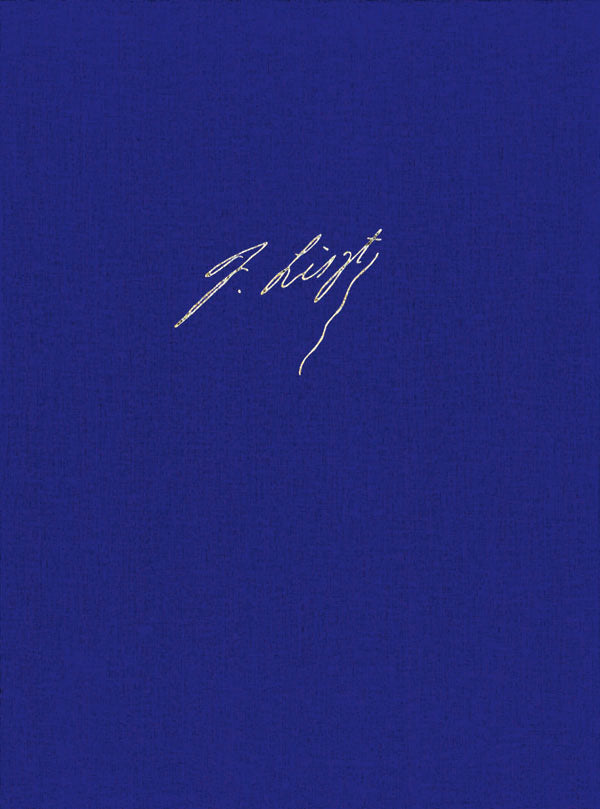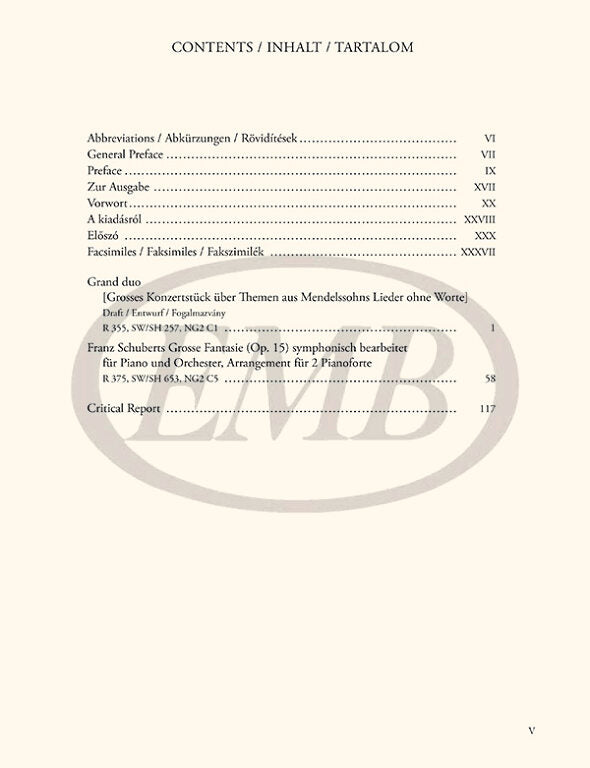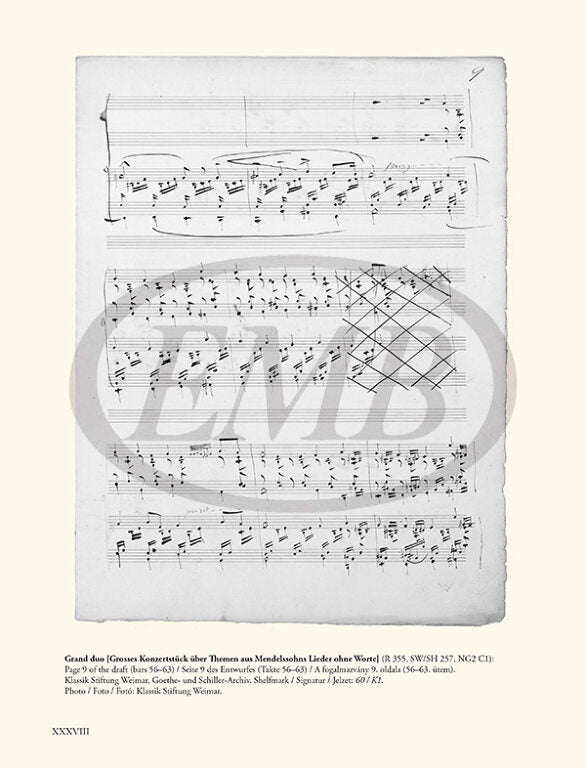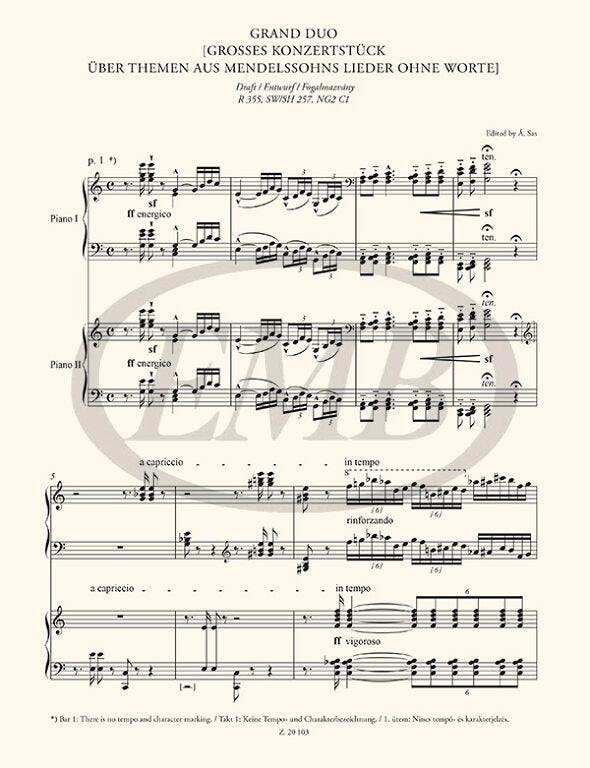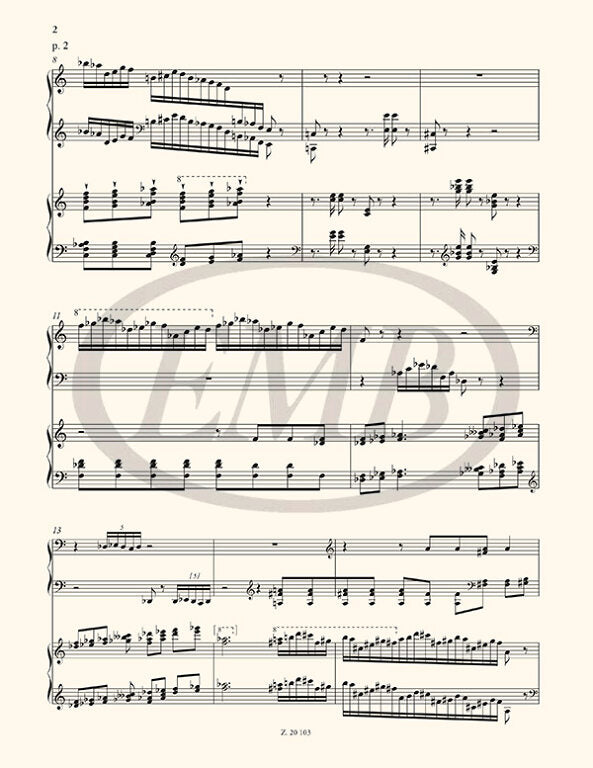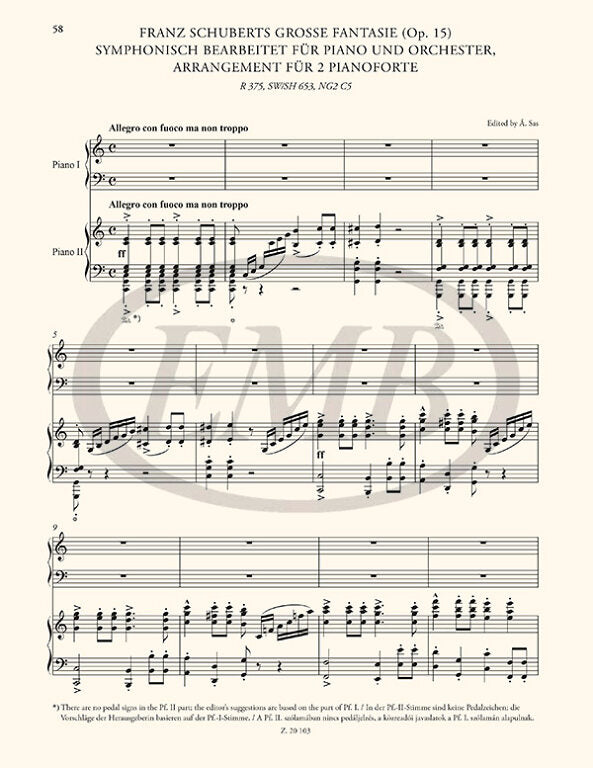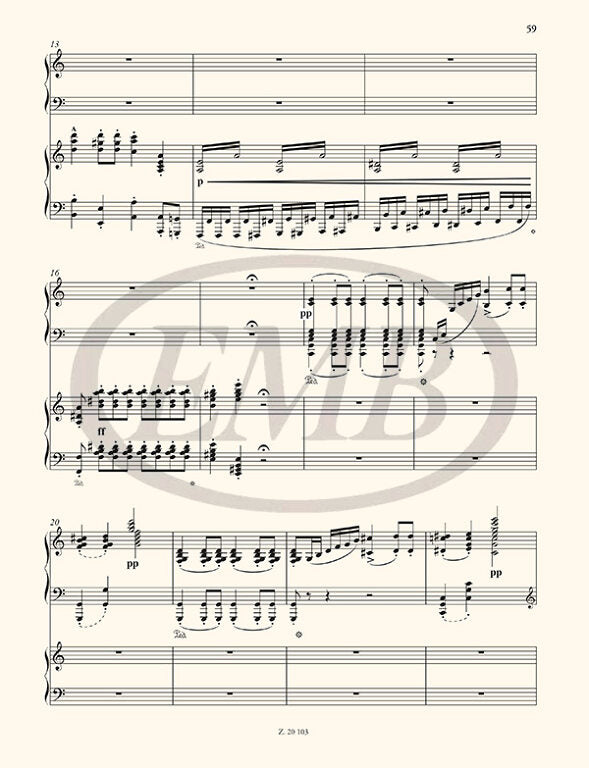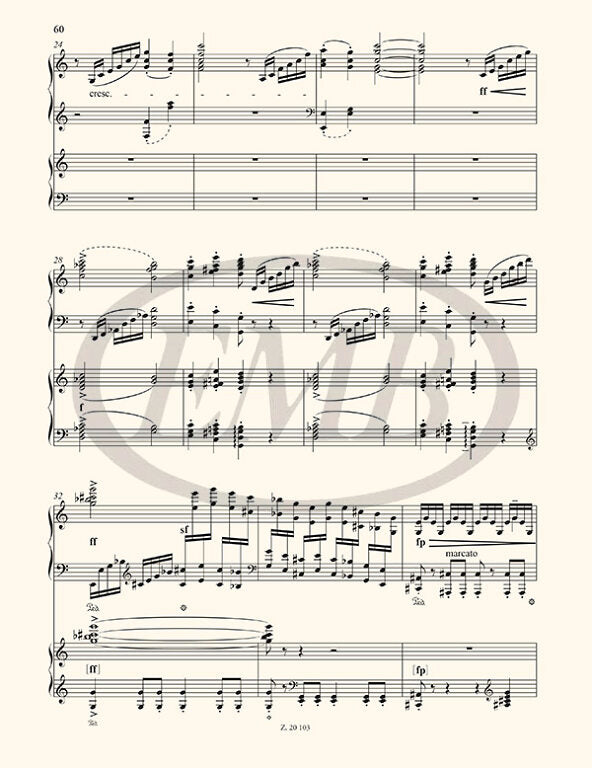Liszt: Grand duo (draft), Franz Schuberts Grosse Fantasie (Op. 15)
New Edition of the Complete Works III/1
Expected to ship in 1-2 weeks.
- Composer: Franz Liszt (1811-1886)
- Instrumentation: Piano I, Piano II
- Binding: Hardcover
- ISMN:
- Size: 9.1 x 11.8 inches
- Pages: 176
- Urtext / Critical Edition
Description
Composed in 1834, Liszt's Grand duo is based on material from three pieces from the first book (Op. 19b) of Mendelssohn's Songs without Words (No. 1 in E Major, No. 6 in G Minor, and No. 3 in A Major). While Liszt made an almost literal transcription of the first piece, he gave the second and third pieces a much freer arrangement, in the style of concert paraphrases. The large-scale concert piece was premiered by Liszt and Chopin on Christmas Day 1834 in a salon in Paris. The Grand Duo was not published in Liszt's lifetime, and has survived as a draft.
Schubert's Fantasy in C Major (also known as the "Wanderer" Fantasy) was a defining musical experience for the young Liszt. He arranged this masterpiece of Romantic piano literature for piano and orchestra in 1851, at the beginning of his Weimar period, and it was premiered by Julius Egghard in Vienna in December of that year. By 1855, Liszt had transcribed this arrangement for two pianos, because it was played on 22 October 1855 at a concert held in Weimar in honour of his birthday. with the version for piano and orchestra, Liszt attuned the fantasy to the requirements of the concert hall, reinforcing the orchestral effects inherent in Schubert's composition. His aim with the two-piano version was to achieve a similarly grand effect in spaces too small for an orchestra. The arrangement for piano and orchestra appeared in print in 1857, followed by the two-piano version in 1862.
This volume comes complete with a detailed preface in English, German, and Hungarian containing new research findings, several manuscript facsimiles, and a critical report in English.
Works:
- Grosses Concert Piece über Themen aus Mendelssohns Lieder ohne Worte, S. 257, LW C1
- Franz Schuberts Grosse Fantasie, S. 653, LW C5
Publishers use a lot of words to describe what they sell, and we know it can be confusing. We've tried to be as clear as possible to make sure you get exactly what you are looking for. Below are descriptions of the terms that we use to describe the various formats that music often comes in.
Choral Score
A score for vocalists that only contains the vocal lines. The instrumental parts are not there for reference. Generally, cheaper than a vocal score and requires multiple copies for purchase.
Facsimile
Reproductions of the original hand-written scores from the composer.
Full Score
For ensemble music, this indicates that the edition contains all parts on a single system (there are not separate parts for each player). In larger ensembles, this is for the conductor.
Hardcover
Hardbound. Generally either linen-covered or half-leather.
Orchestral Parts
Similar to a wind set, this is a collection of parts. In the case of strings, the numbers listed are the number of copies included, though generally these are available individually (often with minimum quantities required).
Paperback
When publishers offer multiple bindings (e.g. hardcover) or study scores, this is the "standard" version. If you're planning to play the music, this is probably what you want.
Performance / Playing Score
A score of the music containing all parts on one system, intended for players to share. There are not separate parts for each player.
Set of Parts
For ensemble music, this indicates that there are separate individual parts for each player.
Solo Part with Piano Reduction
For solo pieces with orchestra, this is a version that contains a piano reduction of the orchestra parts. For piano pieces, two copies are typically needed for performance.
Study Score
A small (think choral size) copy of the complete score meant for studying, and not playing. They make great add-ons when learning concertos and small chamber works.
Vocal Score
A score prepared for vocalists that includes the piano/organ part or a reduction of the instrumental parts.
Wind Set
For orchestral music, this is a collection of wind and percussion parts. The specific quantities of each instrument are notated.
With Audio
In addition to the printed music, the edition contains recordings of the pieces. This may be an included CD, or access to files on the internet.
With / Without Fingering (Markings)
Some publishers prepare two copies - a pure Urtext edition that includes no fingering (or bowing) suggestions and a lightly edited version that includes a minimal number of editorial markings.
